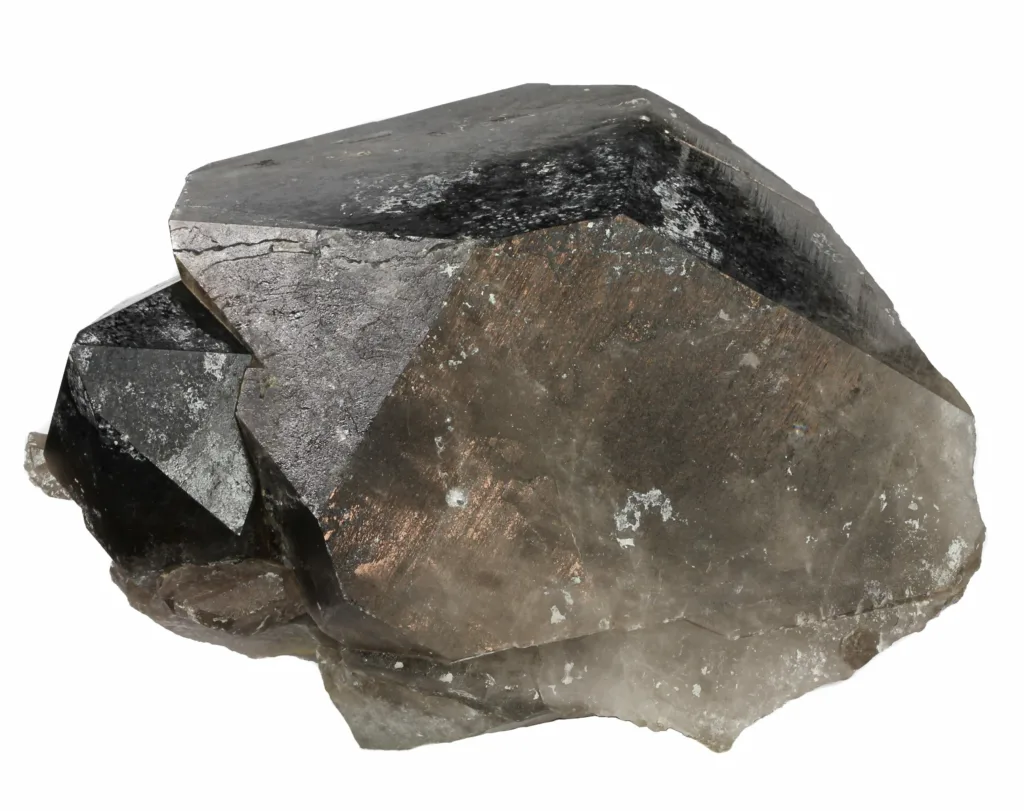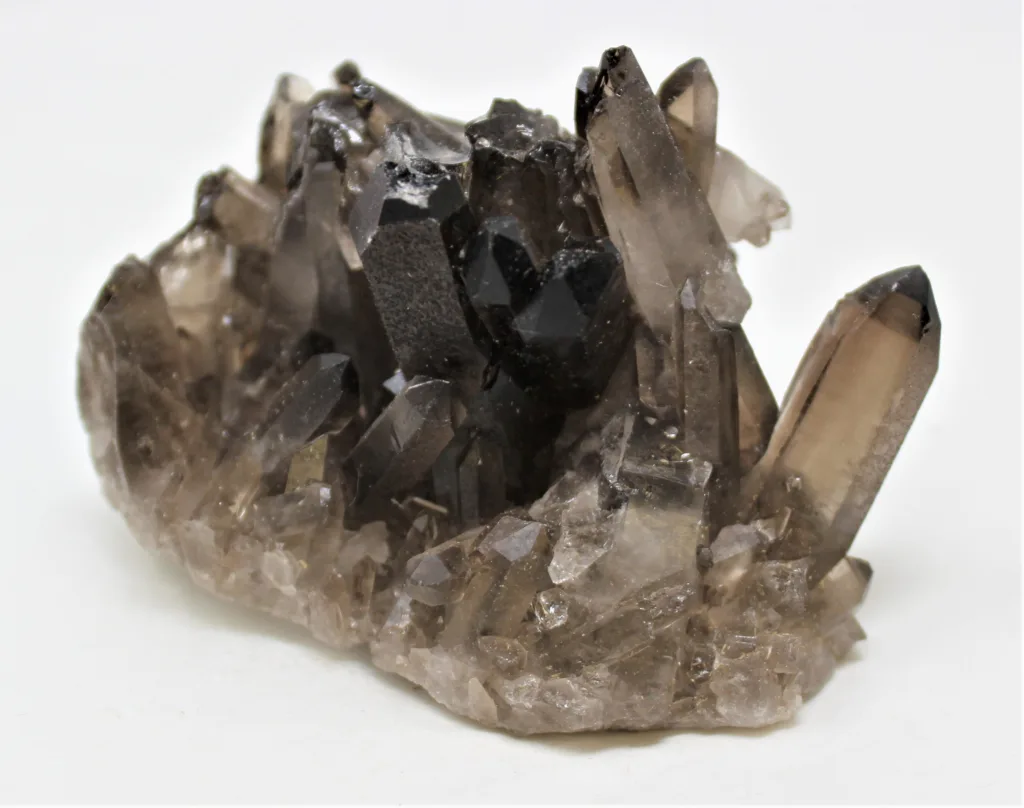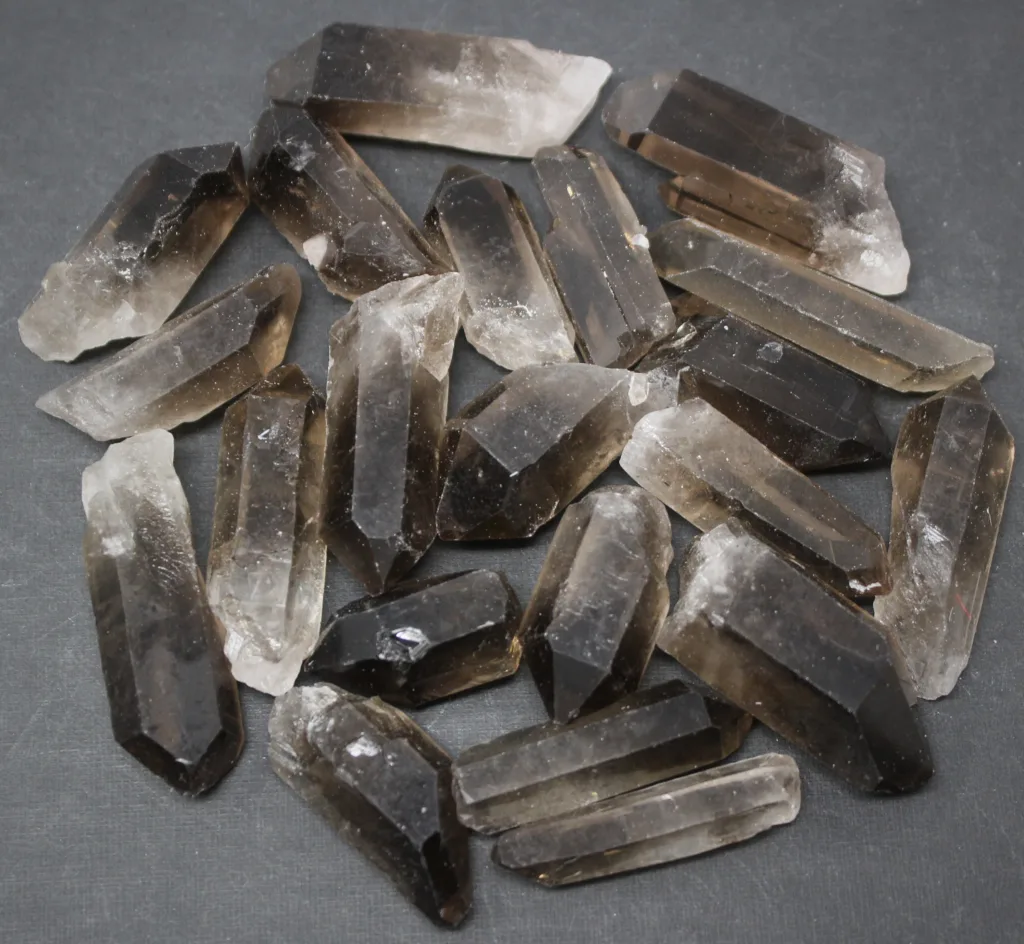Smoky quartz is a popular variety of quartz known for its distinctive brown to black coloration. This unique hue is primarily caused by exposure to natural radiation over geological time scales. However, in modern gemology, artificial irradiation is often used to enhance or replicate the smoky appearance in otherwise clear or pale quartz.

This article explores the geological processes behind natural smoky quartz formation, compares them with artificial irradiation methods, and discusses the implications for gemology, mineralogy, and consumer markets.
1. The Geology of Natural Smoky Quartz
1.1 Formation and Composition
Smoky quartz is a silicon dioxide (SiO₂) mineral, like all quartz varieties, but its color arises from the presence of trace elements and structural defects induced by radiation. The key factors in natural smoky quartz formation include:
- Aluminum Impurities: Small amounts of aluminum (Al³⁺) substitute for silicon in the quartz lattice.
- Natural Radiation: Over millions of years, quartz crystals embedded in granite, pegmatite, or other radioactive host rocks are exposed to gamma rays, alpha particles, or beta radiation from decaying isotopes (e.g., uranium, thorium, or potassium-40).
- Color Centers: Radiation displaces electrons, creating “color centers” (defects in the crystal structure) that absorb visible light, producing the smoky hue.
1.2 Geological Occurrence
Natural smoky quartz is commonly found in:
- Granitic pegmatites (e.g., the Swiss Alps, Brazil, Madagascar)
- Hydrothermal veins (often associated with tin and tungsten deposits)
- Metamorphic terrains where radioactive minerals are present
The depth and duration of radiation exposure determine the intensity of the color—longer exposure leads to darker shades.
2. Artificial Irradiation of Quartz

2.1 Methods of Artificial Irradiation
To mimic natural processes, gemologists and commercial producers use artificial irradiation techniques, including:
- Gamma Irradiation (Cobalt-60): The most common method, producing a uniform smoky color.
- Electron Beam Irradiation: Accelerated electrons create similar color centers but may require annealing to stabilize the color.
- Neutron Irradiation (Nuclear Reactors): More intense, but rarely used due to induced radioactivity risks.
2.2 Differences from Natural Irradiation
While both natural and artificial irradiation produce similar visual effects, key differences include:
| Factor | Natural Irradiation | Artificial Irradiation |
|---|---|---|
| Timeframe | Millions of years | Hours to days |
| Radiation Source | Uranium/Thorium decay | Cobalt-60, electron beams |
| Color Stability | Very stable | May fade with UV exposure |
| Radioactivity | Generally safe | May require testing |
2.3 Detection and Gemological Implications
Gemological labs use spectroscopic analysis (e.g., UV-Vis, EPR) to distinguish natural from irradiated smoky quartz. Key indicators include:
- Absorption Bands: Natural smoky quartz may show subtle differences due to prolonged exposure.
- Radioactivity Levels: Artificially irradiated stones may retain trace radioactivity (though usually within safe limits).
3. Consumer and Market Considerations

3.1 Natural vs. Treated Smoky Quartz
- Natural smoky quartz is rarer and often more valuable to collectors.
- Artificially irradiated quartz is widely available and affordable, commonly used in jewelry.
3.2 Ethical and Disclosure Practices
International gemstone trade regulations (e.g., CIBJO, FTC) require disclosure of irradiation treatments. Consumers should:
- Buy from reputable dealers.
- Request lab certification for high-value stones.
4. Conclusion
The formation of smoky quartz through natural radiation is a fascinating geological process that takes millions of years. Artificial irradiation successfully replicates this effect, making smoky quartz more accessible, but with key differences in stability and origin. Understanding these distinctions is crucial for gemologists, collectors, and consumers in evaluating and appreciating this unique mineral.
Further Reading & References
- Rossman, G. R. (1994). “Colored Varieties of the Silica Minerals.” Reviews in Mineralogy.
- Nassau, K. (1983). The Physics and Chemistry of Color. Wiley.
- GIA (Gemological Institute of America) – “Quartz Varieties and Treatments.”
This article highlights the intersection of geology, physics, and gemology in understanding one of nature’s most intriguing color phenomena.




































